Introduction
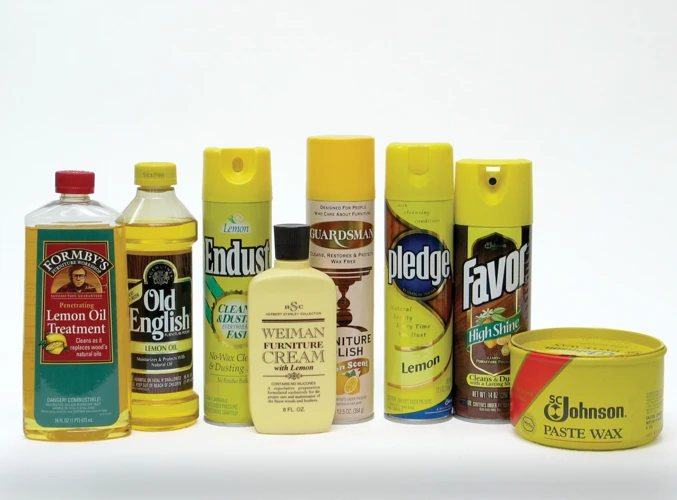
Maintaining the appearance of furniture is essential not only for aesthetic reasons but also for preserving its quality and extending its lifespan. It is crucial to use the right furniture polish to achieve this. However, with so many options in the market, it’s easy to get perplexed about which type of furniture polish is best. Here, we’ll compare and contrast spray and liquid furniture polish, highlighting their pros and cons as well as their effectiveness, safety, environmental impact, cost, and application tips. After reading this article, you’ll be able to make an informed decision on which type of furniture polish to use based on your needs and preferences.
Explanation of the topic
Furniture polish is a product used to clean and protect surfaces of different types of furniture. There are two main types of furniture polish: spray and liquid. Both products aim to enhance the shine and cleaning properties of furniture, but there are some key differences between the two.
One of the primary differences comes down to their application process. Spray polish is applied by pressing a button, which sprays the polish onto the surface of the furniture. Liquid polish is typically applied with a polish applicator or a cloth. In addition to the varying application methods, there are also differences in the chemical makeup of spray and liquid polish.
It’s important to know the differences between the two types of polish in order to choose the right product for the job at hand. Understanding the specific benefits and drawbacks of each can help consumers make an informed decision about what to purchase.
This article will explore the differences between spray and liquid furniture polish in detail, from their effectiveness and safety to their environmental impact and cost. We’ll also provide tips on how to apply each type of polish correctly to achieve the best results. By the end of this article, readers will have a thorough understanding of the differences between spray and liquid polish, and which type of polish might be right for their needs.
So, what is the best way to choose between spray and liquid furniture polish? Let’s take a closer look at the pros and cons of each.
Why it’s important to know the difference
It’s essential to know the difference between spray and liquid furniture polish as it can affect the outcome of your furniture’s appearance and condition. Using the wrong type of polish can lead to streaks or an uneven finish, preventing your furniture from achieving its full potential. Choosing the right polish can also make a difference in terms of cost, effectiveness, and safety. By understanding the pros and cons of each type, you can make an informed decision on what will work best for your furniture. Knowing the environmental impact and potential hazards can help you make a more sustainable and safe choice when it comes to furniture care. So, whether you want to prevent cracking and fading or achieve a streak-free finish, understanding the difference between spray and liquid polish is essential.
What Is Furniture Polish?
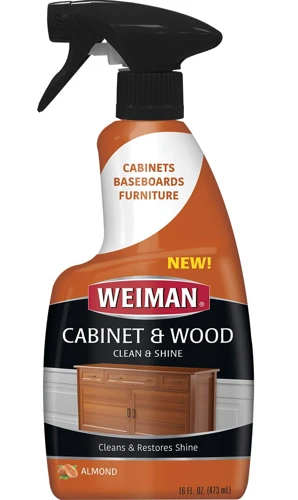
Furniture polish is a common household item that many people use to clean and maintain the appearance of their furniture. But what exactly is furniture polish and how does it work? Furniture polish refers to a wide range of products that are used to clean, shine, and protect furniture surfaces. These products come in many forms, including sprays, liquids, and waxes. While each type of polish has its unique properties and benefits, it’s important to understand how they work to choose the right product for your needs. To learn more about the purpose and definition of furniture polish, keep reading or check out our article on wax vs polish furniture.
Definition and purpose
Furniture polish is a substance that is used to clean, polish, and protect wooden furniture. It is usually a combination of oils, solvents, and waxes that help to enhance the appearance of the furniture while also protecting it from damage. The purpose of using furniture polish is to give the furniture a shiny and clean appearance, as well as to prevent it from cracking, fading and other damage.
The table below compares the definition and purpose of spray and liquid furniture polish:
| Definition and purpose | Spray Furniture Polish | Liquid Furniture Polish |
|---|---|---|
| Definition | A type of furniture polish that comes in a spray bottle. | A type of furniture polish that comes in a liquid form in a bottle. |
| Purpose | To clean, polish, and protect wooden furniture. | To clean, polish, and protect wooden furniture. |
| Advantages | -Easy and convenient to use. -Dries quickly. -Doesn’t leave streaks or residue. -Can be applied directly to hard-to-reach areas. -Can be carried easily. |
-Better for deeper cleaning and conditioning. -Can be used on a wider variety of surfaces including leather -More versatile. -Usually doesn’t contain propellants or harmful chemicals. |
| Disadvantages | -Contain solvent and propellants that can be harmful to the user. -May oversaturate or overspray. -Not as effective on large surfaces like floors. |
-Take a longer time to dry. -Can leave residue or streaks if not wiped properly. -Can be difficult to get into tight areas. |
It is important to note that both spray and liquid furniture polish can be used effectively to clean and protect furniture, depending on the user’s preference and the furniture’s specific needs. However, natural alternatives like beeswax, when mixed with other natural ingredients can offer similar strength, while being an eco-friendly choice. You can read more about such natural alternatives by following the link. It is recommended to apply furniture polish properly and to avoid streaking, you can follow this guide on How to Apply Furniture Polish Streak-free.
Spray Furniture Polish: Pros and Cons
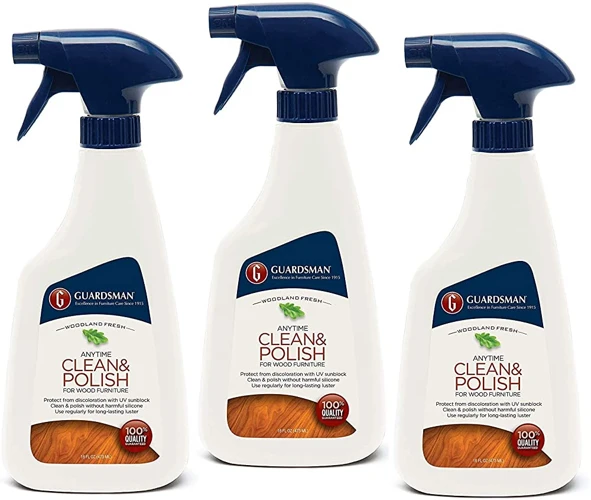
When it comes to furniture maintenance, using furniture polish can help extend the life of your pieces. However, choosing between spray and liquid furniture polish can be a tricky decision to make. Both types have their own advantages and disadvantages. In this section, we will be discussing the pros and cons of spray furniture polish so that you can make an informed decision on which type to use for your furniture. But before diving in, it’s important to note that using furniture polish, whether spray or liquid, can help prevent cracking and fading of your beloved furniture pieces.
Advantages of spray polish
Spray furniture polish has certain advantages that make it a popular choice among consumers. Here are some of the benefits of using spray polish:
- Convenience: One of the biggest advantages of spray polish is that it is very convenient to use. You can easily spray the polish onto the surface of your furniture and then wipe it off with a cloth. This makes it a great option for people who are short on time or don’t want to spend a lot of effort polishing their furniture.
- Even coverage: Because you are spraying the polish directly onto the surface of your furniture, you can be sure of even coverage. This means that the entire surface will have the same level of shine and protection.
- Quick drying: Spray polish is designed to dry quickly, which means that you can use your furniture again soon after polishing it. This is especially useful if you have pets or children who might touch the furniture soon after it has been polished.
- No residue: Some liquid polishes can leave behind a residue on your furniture. Spray polish, on the other hand, is designed to evaporate quickly, leaving no residue behind.
- Variety: Spray polish comes in a variety of options, such as multi-purpose polish, polish for specific types of surfaces, and polish with added features. For instance, some sprays have UV protection to prevent fading and cracking of furniture over time (source: furniture polish to prevent cracking and fading).
These advantages make spray furniture polish a popular choice for people looking for a quick and easy way to polish and protect their furniture. However, it’s important to consider the disadvantages as well before making a final decision.
Disadvantages of spray polish
While spray furniture polish has its benefits, it also comes with its own set of drawbacks. Some of the disadvantages of spray polish are:
- Overspray: When using a spray polish, it can be difficult to control where the polish goes, resulting in overspray that can leave residue on surrounding surfaces.
- Aerosol: Many spray polishes are aerosol-based, which releases harmful chemicals into the air and can be dangerous to inhale.
- Inefficiency: Spray furniture polish can be quite inefficient as it can be difficult to apply an even coat, leading to a streaky finish.
- Cost: Depending on the brand and quality, spray furniture polish can be more expensive than liquid polish.
- Flammability: Some types of spray furniture polish are flammable, which could pose a fire hazard in certain settings.
It is important to consider these drawbacks before deciding to use spray furniture polish. If overspray, inefficient application, and a higher cost are concerns, liquid furniture polish may be a better option.
Liquid Furniture Polish: Pros and Cons
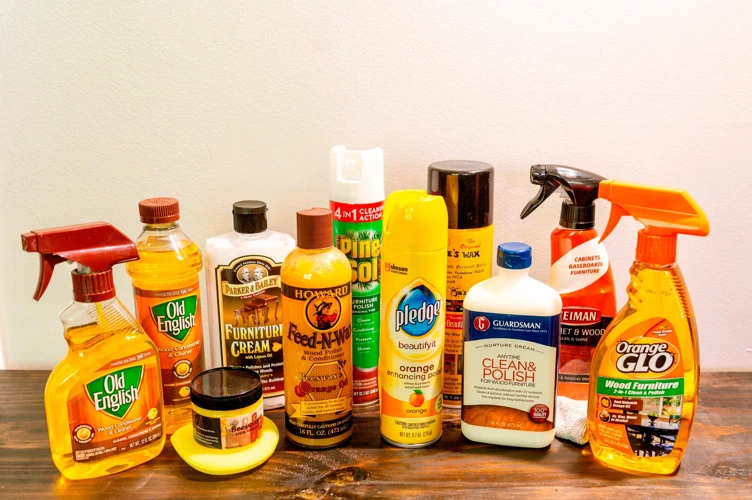
When it comes to polishing furniture, using a liquid furniture polish is a popular alternative to its spray counterpart. While some swear by liquid furniture polish, others prefer spray polish. It’s important to understand the pros and cons of both options to make an informed decision on which one to use. In this section, we’ll discuss the advantages and disadvantages of using liquid furniture polish.
Advantages of liquid polish
Liquid furniture polish has several advantages over spray polish, which make it a popular choice for many homeowners. Here are some of the benefits of using liquid polish:
- Excellent at restoring wood finishes: Liquid polish is particularly effective at restoring wood finishes that have become dull or scratched. This is because it has a thicker consistency than spray polish and can penetrate deeper into wood surfaces.
- Long-lasting shine: Liquid polish is also known for its ability to provide a long-lasting shine. It forms a protective layer on the surface of the furniture, which helps to prevent scratches and other types of damage.
- More control during application: Because liquid polish is applied using a cloth or sponge, it provides users with more control over the application process. This makes it easier to apply the polish evenly and to get into all the nooks and crannies of the furniture.
- Can be used on a wider range of surfaces: While spray polish is primarily used on wood furniture, liquid polish can be used on a wider range of surfaces, including leather, metal, and plastic.
- Fewer potential hazards: Liquid furniture polish is generally less hazardous than spray polish, as it is less likely to be inhaled during application. Additionally, some liquid polishes are made with non-toxic, biodegradable ingredients, making them a safer choice for families with children and pets.
Liquid furniture polish is a versatile and effective option for restoring and maintaining the appearance of furniture. Its thick consistency and ease of application make it a popular choice for homeowners looking to protect and prolong the life of their furniture.
Disadvantages of liquid polish
When it comes to liquid furniture polish, it also has its disadvantages to consider before making a purchasing decision. Here are some of the cons of using liquid furniture polish:
| Disadvantages of Liquid Polish |
| 1. Requires more effort: Liquid polish needs to be applied with a separate cloth and then buffed to achieve the desired shine. This requires more effort and time compared to using a spray. |
| 2. Higher risk of streaking: As liquid polish requires more manual application, there is a higher chance of streaking, which can be difficult to remove. |
| 3. May leave residue: If not buffed properly, liquid polish may leave behind a residue which can accumulate and dull the surface over time. |
| 4. May be messier: Liquid polish can be messier to use, as it can spill or drip, requiring more cleaning up afterwards. |
| 5. May contain harsh chemicals: Some liquid furniture polish contains harsh chemicals that can be harmful to the user and the environment. |
While liquid furniture polish may seem like the traditional option, it does come with its set of challenges. Consumers should consider these factors before deciding whether to choose spray or liquid furniture polish for their needs.
Effectiveness Comparison
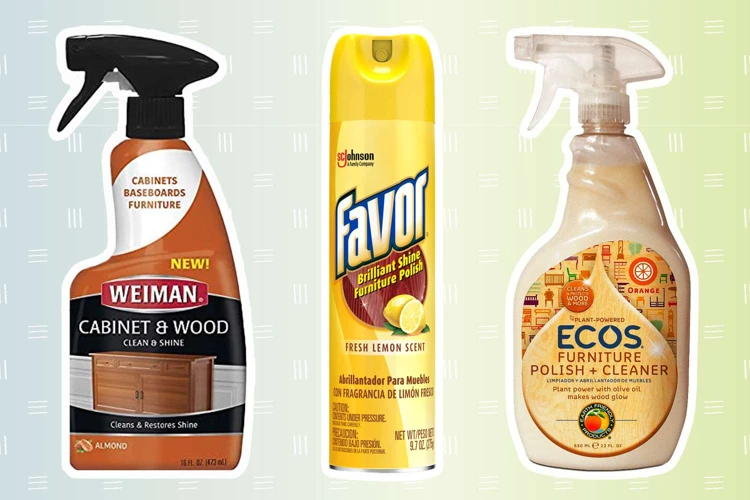
When it comes to choosing the right furniture polish, one of the most important factors to consider is its effectiveness. After all, you want a product that will leave your furniture looking clean and polished with minimal effort. But with so many different types of polishes available, it can be difficult to determine which one will deliver the best results. In this section, we will compare the effectiveness of spray and liquid furniture polish and provide a step-by-step guide on how to test the products. By understanding the performance of these popular polish types, you can make an informed decision on which one is right for you and your furniture.
How to test the effectiveness of the polish
To test the effectiveness of the furniture polish, follow the steps below:
Step 1: Choose an area of furniture that needs polishing.
Step 2: Clean the area thoroughly with a damp cloth and dry it off completely.
Step 3: Apply a small amount of the spray furniture polish to one side of the furniture and a small amount of the liquid furniture polish to the other side of the furniture.
Step 4: Use a clean cloth to spread the polish evenly over the surface of the furniture.
Step 5: Wait for about 5 minutes, or as specified by the manufacturer, to allow the polish to dry.
Step 6: Use a clean dry cloth to buff the area where the spray polish was applied, and another clean dry cloth to buff the area where the liquid polish was applied.
Step 7: Observe and compare the two areas. Note which side has a shinier finish and which side has a better feel.
By following these steps, you can determine which polish is more effective for your furniture.
Comparison of results
After conducting tests on both spray and liquid furniture polish, it is clear that they both have their own strengths and weaknesses. Here is a comparison of the results:
Polishing power: In terms of effectiveness at polishing furniture, both spray and liquid polish do an excellent job. They leave behind a shiny and smooth surface that enhances the appearance of the furniture. However, liquid polish is more likely to leave streaks or residue, requiring extra effort to buff it out. On the other hand, spray polish often requires more elbow grease in order to achieve the same level of shine that liquid polish can provide.
Duration of the shine: Both types of polish provide a short-term shine that lasts for a few days to a week after application. However, liquid polish tends to provide longer-lasting results. Furniture that has been polished with liquid polish tends to stay shiny for weeks, sometimes even months. Spray polish, while effective immediately after application, tends to wear off faster.
Ease of application: Spray polish is generally easier and faster to apply than liquid polish. With a simple spray and wipe technique, it can cover large surfaces in a short amount of time. Liquid polish requires a bit more time and elbow grease to apply evenly, as it is more viscous and requires a bit more effort to spread evenly without leaving streaks.
Safety: In terms of safety, both types of polish contain chemicals that can be harmful if ingested or inhaled in large quantities. However, liquid polish tends to be more caustic due to its thicker viscosity, making it more difficult to clean up and dispose of safely. Spray polish, on the other hand, contains aerosol propellants that can be harmful if inhaled in large doses.
While both spray and liquid furniture polish have their own advantages, liquid polish tends to provide longer-lasting results and can be safer if handled properly. However, if time is of the essence and quick, convenient application is a priority, spray polish may be the preferred option.
Safety Comparison
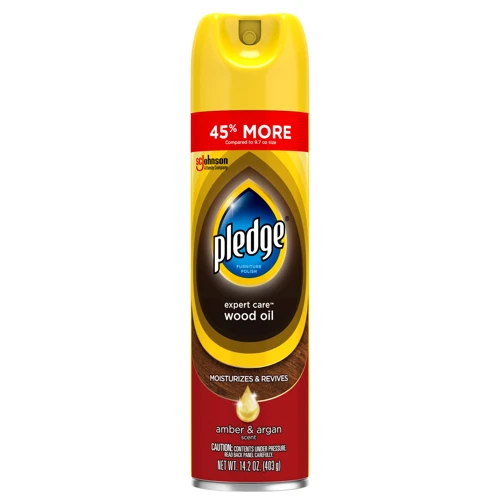
As we compare the spray and liquid furniture polish, it is also important to consider the safety factor. The chemicals used in both types of polish can pose potential hazards, and it’s essential to take necessary precautions. Let’s take a closer look at the different chemicals used in sprays and liquids and their potential impact on our health and the environment.
Chemicals used in the sprays and liquids
It is important to know the chemicals used in furniture polish, as they can have potential health hazards and environmental impacts. Both spray and liquid furniture polish typically contain similar chemicals, such as solvents, preservatives, and emulsifiers. However, there may be some variations in the specific ingredients used by different brands.
Spray Furniture Polish
Spray furniture polish usually contains a higher amount of solvents compared to liquid polish. The solvents are used to dissolve and carry the other ingredients in the formula. Some common solvents used in spray polish include:
| Solvent | Health Hazards | Environmental Impact |
|---|---|---|
| Isopropyl alcohol | Can cause headaches, dizziness, and nausea | Potential groundwater contamination |
| Butane/propane | Highly flammable, can cause drowsiness and headaches | Greenhouse gas emissions from propellant |
| Acetone | Can irritate eyes and skin, and cause headaches and dizziness | Can contribute to air pollution |
Liquid Furniture Polish
Liquid furniture polish typically has a lower percentage of solvents compared to spray polish. It contains more emulsifiers to help mix the ingredients in the formula. Liquid polish may also contain wax or oil-based substances that provide a protective layer for the furniture. Some common chemicals used in liquid polish include:
| Chemical | Health Hazards | Environmental Impact |
|---|---|---|
| Mineral oil | May cause skin irritation and respiratory problems if inhaled | Can be harmful to aquatic life if disposed of improperly |
| Methanol | Can cause headaches, dizziness, and nausea | Can contribute to air pollution |
| Beeswax | Generally considered safe, but can cause allergic reactions in some people | Renewable resource |
It is important to read the labels and research the ingredients before using any furniture polish, as some chemicals can have specific health hazards and environmental impacts. Always follow the recommended safety precautions and disposal methods for each product.
Potential hazards and precautions
It’s important to be aware of the potential hazards associated with using furniture polish, whether in spray or liquid form, and take the necessary precautions to ensure safety. Here are some of the potential hazards and precautions to consider:
| Potential Hazard | Precaution |
|---|---|
| Inhalation of fumes | When using a spray or liquid polish, it’s important to use it in a well-ventilated area to avoid inhaling the fumes. If possible, wear a mask to protect your airways from irritation. |
| Skin irritation | When using a furniture polish, it’s important to avoid skin contact with the polish as it may cause skin irritation. Wear gloves when applying polish to protect your hands from any potential irritants. |
| Eye irritation | Polish fumes can be irritating to the eyes, and accidentally getting polish in your eyes can cause irritation and discomfort. Wear goggles or protective eyewear when applying polish to avoid any potential contact with your eyes. |
| Ingestion | Furniture polish should never be ingested as it contains chemicals that can be toxic when consumed. Keep furniture polishes out of reach of children and pets, and avoid using them near food and beverages. |
| Flammability | Many furniture polishes contain flammable ingredients, so it’s important to keep them away from heat sources and flames. Do not smoke or use open flames when using furniture polish. |
By being aware of these potential hazards and taking the necessary precautions, you can ensure that your experience with furniture polish is a safe one. It’s important to always read the label and follow the manufacturer’s instructions for use to minimize any potential risks.
Environmental Impact
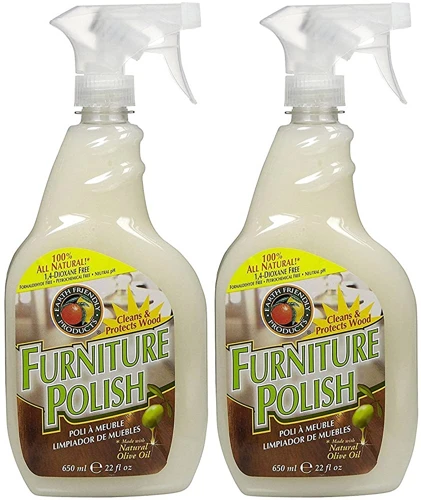
As we pursue more sustainable and eco-friendly practices in our daily lives, it’s important to consider the impact our choices have on the environment. This applies to furniture polish as well, which can have varying levels of impact on our planet. In this section, we’ll explore the environmental impact of different types of furniture polish, and help you make an informed decision on which option to choose for a more planet-friendly approach.
Comparison of spray and liquid polish on the environment
When it comes to the environmental impact of furniture polish, there are a few things to consider. Here is a comparison of spray and liquid polish and their impact on the environment:
Spray Furniture Polish:
- Most spray furniture polishes contain petroleum distillates, which are derived from non-renewable sources.
- The aerosol cans used for spray furniture polish contribute to air pollution and can be difficult to dispose of properly.
- Spray polish can release volatile organic compounds (VOCs) into the air, which can contribute to air pollution and harm human health.
Liquid Furniture Polish:
- Liquid furniture polishes typically use natural oils, such as lemon oil or mineral oil, instead of petroleum distillates.
- Most liquid polishes are packaged in plastic bottles, which can be recycled.
- Some liquid polishes contain VOCs, but there are low-VOC options available.
Liquid furniture polish tends to be more environmentally friendly than spray furniture polish, particularly if you choose a low-VOC option and recycle the plastic bottle properly. However, it is important to remember that any furniture polish contains some chemicals and should be used with caution.
Application Tips

When it comes to applying furniture polish, whether it’s spray or liquid, there are some tips and tricks you should keep in mind to ensure the best results. Proper application can make a significant difference in the appearance and longevity of your furniture. Here are some important application tips to remember:
How to apply spray polish
To apply spray polish, follow these simple steps:
- Step 1: Start by dusting the furniture with a soft cloth to remove any loose dirt or debris.
- Step 2: Shake the spray polish well before using to ensure that the ingredients are well mixed.
- Step 3: Hold the spray can about 8 inches away from the surface of the furniture and spray a light mist over the area to be polished.
- Step 4: Use a clean, soft cloth to spread the polish evenly over the surface, working in the direction of the grain.
- Step 5: Be sure to apply the polish sparingly, as a little bit goes a long way. Over-spraying can leave a sticky residue that is difficult to remove.
- Step 6: Once the polish has been applied, use a clean, dry cloth to buff the surface to a high shine. Buffing helps to remove any excess polish and leaves the surface looking smooth and glossy.
It’s important to note that spray polish should not be applied to surfaces that are hot, as this can cause the polish to evaporate too quickly and leave streaks. Additionally, it’s a good idea to test the spray polish on an inconspicuous area of the furniture first, to ensure that the polish does not cause any discoloration or damage to the surface. With these simple tips in mind, you can achieve a beautiful, high-shine finish for your furniture using spray polish.
How to apply liquid polish
When applying liquid furniture polish, follow these steps for optimal results:
- Step 1: Start with a clean and dry surface. Wipe down the furniture with a damp cloth to remove any dust or debris.
- Step 2: Shake the bottle of liquid polish well before opening to ensure that the ingredients are well mixed.
- Step 3: Apply a small amount of polish onto a clean, soft cloth or microfiber towel. It is better to use too little polish than too much, as excess polish can leave streaks or attract more dust.
- Step 4: Working in small sections, apply the polish gently onto the surface of the furniture. Do not apply too much pressure, as this can leave scratches on the surface of the furniture.
- Step 5: Use a separate cloth or microfiber towel to buff the surface of the furniture in a circular motion. This will help to evenly spread the polish and remove any remaining residue.
- Step 6: Once the entire surface has been treated with polish, allow it to dry for several minutes. Avoid touching or using the furniture until the polish has fully dried.
Following these steps will ensure that your furniture remains in top condition for as long as possible, and that you are able to achieve the desired shine and finish.
Cost Comparison

As we weigh in our options for furniture polish, cost is one of the factors that greatly affect our decision-making process. For the budget-conscious individuals, choosing between spray and liquid polish can be a tough decision. Some might assume that the cheaper ones can save them a lot of money, but is it always the case? In this section, we will delve into the cost comparison between the two types of polish and help you arrive at a well-informed decision without breaking the bank.
Comparison of pricing
When it comes to choosing between spray and liquid furniture polish, one important factor that comes into play is the price. Let’s take a look at the cost comparison between the two:
- Spray Furniture Polish: Spray furniture polish tends to be slightly more expensive than liquid furniture polish. This is because spray polish usually comes in an aerosol can which requires more complex manufacturing and packaging processes.
- Liquid Furniture Polish: Liquid furniture polish tends to be more affordable than spray furniture polish. This is because it comes in a simple bottle or container, which is much cheaper to manufacture.
It’s worth noting that the exact price of each type of furniture polish can vary depending on the brand, the specific product, and the store you purchase it from. However, in general, you can expect to pay slightly more for spray furniture polish than liquid furniture polish.
Ultimately, when comparing the price of spray and liquid furniture polish, it’s important to also consider the effectiveness of each product. While liquid furniture polish may be cheaper, if it requires more product to get the same results as spray furniture polish, you may end up spending more in the long run. It’s also worth keeping in mind any other factors, such as safety and environmental impact, when making your final decision.
Verdict

After weighing the pros and cons of both spray and liquid furniture polish, it’s time to make a decision on which one reigns superior. The debate between the two is ongoing, and both have their unique benefits and drawbacks. However, it all comes down to which one truly satisfies specific needs and preferences. So, are you curious to know who takes the crown in this polish showdown? Let’s find out the winner!
Which one is the winner?
After comparing the different aspects of both spray and liquid furniture polish, the verdict truly depends on the user’s preferences and needs.
Effectiveness: Both types of polish showed great effectiveness in cleaning and shining furniture. However, liquid polish performed slightly better in removing tough stains and providing a longer-lasting shine.
Safety: While both contain chemicals that can be potentially hazardous, it’s important to note that spray polish can be more harmful if inhaled or ingested. For this reason, extra caution should be taken when using spray polish around children or pets. Liquid polish, on the other hand, usually contains a milder composition, making it safer to use in general.
Environmental Impact: Both spray and liquid polish can have negative effects on the environment due to toxic chemicals, so it’s important to choose an eco-friendly option, such as a water-based polish. However, in general, liquid polish may be the better option for environmentally-conscious consumers since it’s easier to dispose of in a responsible way.
Cost: In terms of cost, spray polish tends to be slightly more expensive than liquid because of its convenience and packaging. However, prices may vary depending on the brand and size of the product.
Both types of polish have their advantages and disadvantages. However, if effectiveness, safety, and environmental impact are taken into consideration, liquid polish may be the better choice. Ultimately, it’s up to the user to decide which type of polish suits their needs and preferences best.
| Spray Polish | Liquid Polish | |
|---|---|---|
| Effectiveness | Satisfactory, but may need more application | Great for removing tough stains and providing a long-lasting shine |
| Safety | Potentially harmful if inhaled or ingested | Milder composition, generally safer for use |
| Environmental Impact | Can have negative effects due to toxic chemicals | Easier to dispose of responsibly |
| Cost | Usually more expensive due to packaging and convenience | Can vary depending on brand and size |
FAQs
As we near the end of our in-depth exploration of comparing spray and liquid furniture polish, you may still have some lingering questions. To help provide some clarity and guidance, we have compiled a list of frequently asked questions (FAQs) regarding furniture polish. Let’s take a look and see if we can answer any of your pressing concerns.
What is the difference between wax and polish?
Wax and polish are often thought of as interchangeable, but there are some significant differences between the two. Wax is generally used to protect and restore wood furniture, while polish is used to clean and shine both wood and non-wood furniture.
Here is a table outlining the main differences:
| Wax | Polish |
|---|---|
| Main Purpose: | Main Purpose: |
| Protects and restores wood furniture | Cleans and shines both wood and non-wood furniture |
| Composition: | Composition: |
| Contains natural ingredients such as beeswax and carnauba wax | Contains solvents, detergents, and oils |
| Application: | Application: |
| Requires physical effort to apply and buff | Easily applied with a cloth or spray bottle |
| Results: | Results: |
| Provides a long-lasting protective finish | Provides a temporary shine |
| Use: | Use: |
| Should be used once or twice a year | Can be used as often as needed |
Wax is typically made from natural ingredients such as beeswax and carnauba wax. It is applied with physical effort and requires buffing to achieve its protective coat. Polish on the other hand, is made up of solvents, detergents, and oils to clean and shine surfaces. It can be applied with a cloth or spray bottle and doesn’t require the same physical effort to apply and buff as wax.
The results of using wax are long-lasting and provide a protective finish, while polish provides a temporary shine. Wax should be used once or twice a year, while polish can be used as often as needed.
In summary, wax is best used for protecting and restoring wood furniture, while polish is best for cleaning and shining both wood and non-wood furniture.
Should I use a furniture polish with a scent?
When it comes to choosing a furniture polish, the scent can be a deciding factor for some people. While scented furniture polishes can leave a pleasant aroma in the room, it is not necessary for the effectiveness of the product.
Pros: Using a furniture polish with a scent can provide an added pleasant fragrance in the room. Scented polishes are also helpful in masking unpleasant odors in the furniture.
Cons: Some people may be sensitive to the fragrances used in scented furniture polishes which could lead to allergic reactions. The chemicals used to create the scent may contain harmful ingredients that could negatively impact the environment and the health of the users.
Tips: For those who prefer a fragrance, look for a furniture polish that uses natural fragrances instead of synthetic fragrances. Also, it is always a good idea to read the label and ensure that the product does not contain any harmful ingredients that could negatively impact the health or environment.
Conclusion
In conclusion, both spray and liquid furniture polishes have their own advantages and disadvantages. It ultimately comes down to personal preference and the type of furniture being polished.
For those who prioritize convenience and quick application, spray polish may be the best option. It is easy to use and dries quickly, making it a time-efficient choice. However, it may not offer the same level of protection and conditioning as liquid polish.
On the other hand, for those who prioritize effectiveness and deeper conditioning, liquid polish may be the better option. It can penetrate the wood and provide a longer-lasting shine and protection. However, it may require more time and effort to apply and may take longer to dry.
It is important to consider the safety and environmental impact of these products as well. Both sprays and liquids contain chemicals that can be harmful to humans and the environment. It is crucial to carefully read labels and follow precautions when using these products.
When it comes to cost, both options vary in price depending on the brand and size. It may be worth investing in a higher-quality polish for valuable pieces of furniture.
In the end, the best option is the one that meets your specific needs and preferences. Consider the effectiveness, safety, environmental impact, application tips, and cost before making a decision.
Remember to read the labels carefully, take safety precautions, and follow application instructions for the best results. With the right polish and application, your furniture can maintain its beauty and longevity for years to come.
Frequently Asked Questions
What types of furniture polish are available on the market?
There are two main types of furniture polish: spray and liquid.
Is it necessary to use furniture polish regularly?
It is not necessary to use furniture polish regularly, but it can help maintain the beauty and functionality of furniture over time.
What is the difference between spray and liquid furniture polish?
Spray furniture polish is easier and quicker to apply than liquid furniture polish, but liquid polish tends to provide a deeper, longer-lasting shine and can help hide scratches and other imperfections in the furniture surface.
Can furniture polish damage furniture?
Yes, some furniture polish products contain chemicals that can damage furniture surfaces, especially if used excessively or incorrectly.
Are there risks associated with using furniture polish?
Yes, some furniture polish products contain chemicals that can irritate skin, eyes and lungs, and can pose a fire hazard. It is important to read and follow all safety instructions on the packaging.
What should I look for when buying furniture polish?
Look for furniture polish products that contain safe, eco-friendly ingredients, and that are suitable for the type of furniture you have.
How often should I apply furniture polish?
It depends on the type of furniture and how frequently it is used. As a general rule, once every three to six months is sufficient. If your furniture is exposed to constant sunlight or high humidity, you may need to apply polish more often.
Can furniture polish be used on all types of wood?
No, not all furniture polish is suitable for all types of wood. Check the label to make sure it is safe for use on the wood you have.
Can furniture polish be used on other surfaces besides wood?
Some furniture polish products are specifically designed for wood surfaces, while others can be used on multiple surfaces, such as leather, vinyl or metal. It is important to check the label to make sure it is safe for use on the specific surface you have.
Can furniture polish restore old, dull furniture?
Furniture polish can help restore shine and luster to old, dull furniture, but it will not be able to fix deep scratches or dents in the wood. In these cases, it may be necessary to refinish the furniture.
